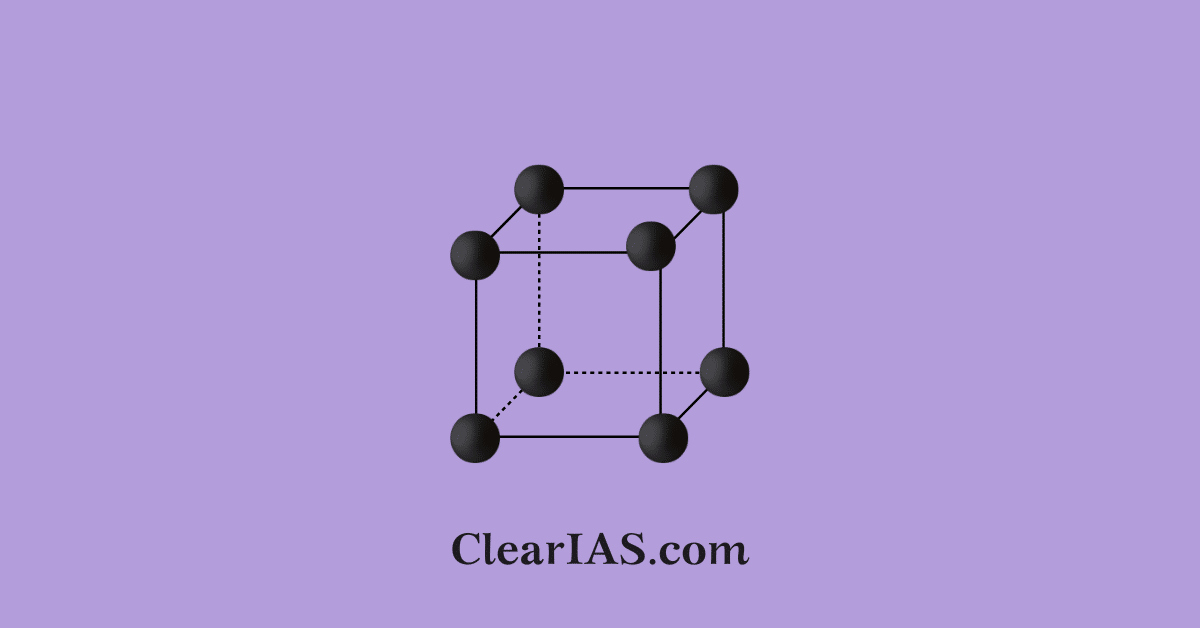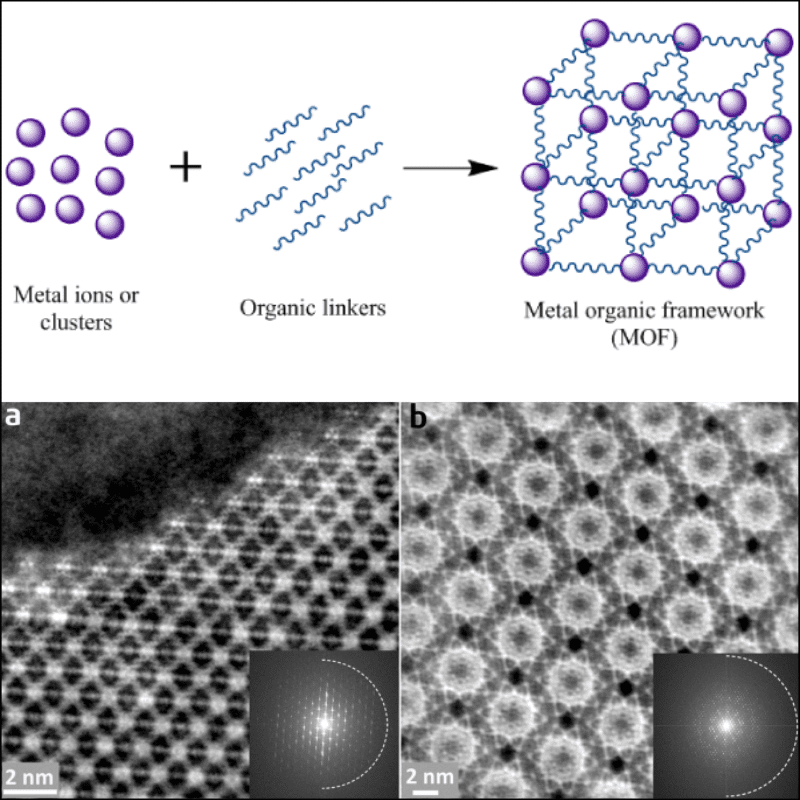
The 2025 Nobel Prize in Chemistry has been awarded to Susumu Kitagawa, Richard Robson, and Omar Yaghi for their pioneering work in developing Metal-Organic Frameworks (MOFs). Read here to learn more about MOFs.
Metal-Organic Frameworks (MOFs) are crystalline materials composed of metal ions and organic linkers forming porous, tunable, and highly ordered structures.
This research has revolutionised materials chemistry by allowing scientists to design materials atom by atom, creating vast internal spaces that can trap, store, and catalyse other molecules.
MOFs are now central to innovations in energy storage, catalysis, gas separation, water harvesting, and environmental protection.
What are Metal-Organic Frameworks (MOFs)?

Before the discovery of MOFs, chemists mainly focused on creating isolated molecular compounds, limiting structural flexibility.
The Nobel laureates expanded chemistry’s reach from the molecular to the architectural level, combining inorganic and organic chemistry principles.
Their innovation lay in reticular chemistry, a concept introduced by Omar Yaghi, which involves linking molecular building blocks into extended, predictable structures.
This ushered in a new era of designed porous materials, bridging the gap between molecular chemistry and solid-state materials science.
- Metal-Organic Frameworks are crystalline, sponge-like materials formed by linking metal ions or clusters (as nodes) with organic ligands (as linkers).
- Structure: This coordination creates 3D frameworks with enormous internal pore volumes and surface areas – up to thousands of square meters per gram.
- Functionality: The pores can be tailored chemically to capture, separate, or catalyse specific molecules.
Scientific Background
- Traditional chemistry focused on creating discrete molecules, but each molecule was confined within its own boundaries.
- The Nobel-winning scientists expanded chemistry into a new dimension of materials design, enabling molecular-level architecture with tunable physical and chemical properties.
- Their work built on earlier coordination chemistry but introduced modularity, allowing scientists to “design materials like LEGO blocks.”
Contributions of the Laureates
- Richard Robson (Australia): Pioneered early coordination frameworks using metal ions and ligands, showing stable crystalline networks could be made.
- Susumu Kitagawa (Japan): Demonstrated that MOFs could adsorb and release gases reversibly, proving their practical utility for storage and separation.
- Omar Yaghi (USA): Synthesised the first robust and highly porous MOFs (e.g., MOF-5). Introduced reticular chemistry — the systematic linking of molecular building blocks into extended structures with predictable topology.
Key Features of Metal-Organic Frameworks
- High Surface Area: Up to 7,000 m²/g – comparable to a football field per gram of material.
- Customisable Pores: Size, shape, and chemical functionality can be tuned.
- Selective Adsorption: Can capture CO₂, H₂, CH₄, or other gases selectively.
- Modularity: New MOFs can be designed from a vast library of metals and organic linkers.
Applications of Metal-Organic Frameworks
- Gas Storage and Separation: Hydrogen or methane storage for clean energy. Carbon capture from industrial emissions.
- Catalysis: Act as micro-reactors for chemical transformations.
- Drug Delivery: Controlled release systems for pharmaceuticals.
- Environmental Remediation: Adsorption of pollutants and heavy metals.
- Sensors and Electronics: Detection of gases, toxins, and humidity.
- Water Harvesting: MOFs that extract water vapour from desert air using solar energy (e.g., Yaghi’s MOF-801).
Significance of the Discovery
- Metal-Organic Frameworks represent a new era in materials chemistry, blurring the line between molecular design and solid-state engineering.
- Their tunability and vast internal architecture make them one of the most versatile materials ever created.
- The concept of reticular chemistry, central to MOF design, has inspired the creation of Covalent Organic Frameworks (COFs) and Hydrogen-Bonded Organic Frameworks (HOFs).
Conclusion
The 2025 Chemistry Nobel Prize celebrates the expansion of chemistry into a new structural dimension, where scientists design materials atom by atom for targeted applications.
By creating metal-organic frameworks, Kitagawa, Robson, and Yaghi have given humanity a molecular toolkit capable of addressing pressing challenges in clean energy, climate change, medicine, and environmental protection, truly a chemistry of the future.
Related article: Macroscopic Quantum Tunelling: Nobel Prize in Physics 2025







Leave a Reply